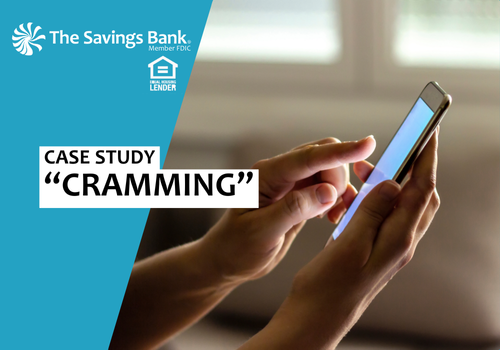Case Study: "Cramming"
04/02/2025

Case Study: “Cramming”
Cramming made headlines several years ago when the Federal Trade Commission (FTC) took on several mobile phone providers who allowed fraudulent activity to happen and cost consumers hundreds of millions of dollars. While most of these cell phone companies have successfully put a stop to many mobile cramming schemes, this type of scam is still popping up.
“Cramming” is a type of fraud where third-party scammers take advantage of complicated bills to hide their own fraudulent charges among the other fees. Most of these charges are under $10 per month and are disguised as a tax, fee, or undisclosed service. Most of the time, the victim has signed up for a “free” subscription, but the third-party company will add charges to their provider’s bill without their consent. In essence, it works like this: The consumer will have an account with Company A. Company B will offer a service to the consumer. Company B then creates unauthorized charges to the consumer through Company A’s bill.
In the early 2000s, this type of scam became extremely popular when texting and smartphones were new. In 2014 and 2015, the FTC along with state and federal agencies took the fight against cramming to the nation’s four largest wireless providers. This resulted in hundreds of millions of dollars in restitution being paid to consumers.
Widespread cramming on mobile bills like was seen in the 2010s has mostly been stopped by wireless providers and the FTC. However, it does still happen and can happen beyond just mobile bills. The most common reason someone becomes a victim of cramming is because they signed up for a “free subscription.” The subscription company then adds the unauthorized fees, taxes, and more to their regular bill hoping the consumer will not question the small amounts charged. Sometimes this happens when fake website developers offer to create a “free” website for a small business but then add charges to the victim’s internet bill every month. It is not illegal for companies to add charges from third parties to your bill, but they must be authorized. Most companies will not know these charges are unauthorized until the victim says something.
While cramming has been stopped in many cases today, there is a valuable lesson to learn from looking at its causes. One lesson is to always question any advertised “free” subscription or service. Today, we see many companies that offer subscription-based services, whether that is streaming platforms, software, or products. Always read the fine print of any subscription or service you agree to, especially if it claims to be free. If you decide to move forward with it, keep an eye on your bills and bank statements to make sure there are no unauthorized charges.
Another lesson is to always question and reach out to the proper entity about any unfamiliar charges you receive. Many of the victims of cramming lost more money because it took them months or even years to question items on their bill. It never hurts to be sure a charge was in fact authorized.
While cramming is not as prevalent as it was in years past, it does still happen, and consumers need to be aware. Furthermore, cramming can be seen as a case study in avoiding similar fraud attempts. If you suspect you are a victim of cramming, reach out to the FTC at ReportFraud.ftc.gov.
Sources:
https://www.fbi.gov/news/stories/-cramming-scheme-operator-sentenced
https://www.fcc.gov/consumers/guides/understanding-your-telephone-bill

